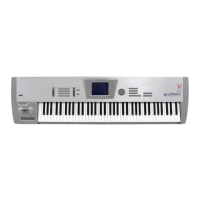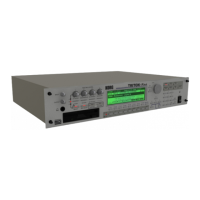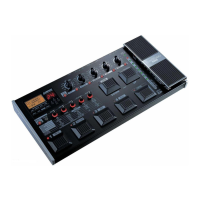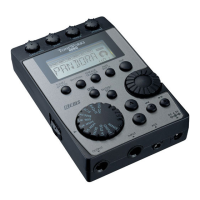1–1: Timb Param1 (Timbre Parameter 1)
57
4. Combination Edit mode
Combination Edit P1
1–1: Timb Param1 (Timbre Parameter 1)
Here you can make basic settings for a combination, and make basic settings for the program used
by each timbre.
1–1a: Combination Name
The name of the combination selected in Combination Play mode will be displayed.
If you press the text edit button, a display page will appear in which you can rename the combina-
tion (
☞
Basic Guide, page 6). The Combination Name is displayed in pages “1–1: Timb Param1”
through “1–3: Timb Param3”, and can be edited from any of these pages.
If you wish to keep the new combination name that you assign, be sure to use the Write Com-
bination operation (
☞
Basic Guide, page 23) to write it into memory. If you select another com-
bination or turn the power off before writing, the new combination name will be lost.
1–1b: Category
Two categories can be assigned to each combination. When selecting combinations in Combina-
tion Play mode, you can search for combinations by category.
The Combination Category is displayed in pages “1–1: Timb Param1” through “1–3: Timb
Param3”, and can be edited from any of these pages.
A (Category A) [Pad&Lead…Drums/Special FX]
With the factory settings, this will be the name of the instrument group, but you can modify it in
“4–3: Category Combination A” of Global mode Timb Param3 (
☞
page 142 in this manual).
B (Category B) [User Category C01…C16]
The factory set category names can be modified in “4–4: Category Combination B” of Global mode
(
☞
page 142 in this manual).
1–1c: Bank/Program
Select the program which will be assigned to each timbre 1–8.
Note that a bank M program can be selected only for one timbre.
This parameter will also be displayed in Combination Play mode “1–1: Combination Play” (
☞
page 55 in this manual) and can be set from either location.
1–1a
1–1b
1–1c
1–1d
1–1e
Page Menu
1–1A
Data for the
selected timbre
Timbre No.

